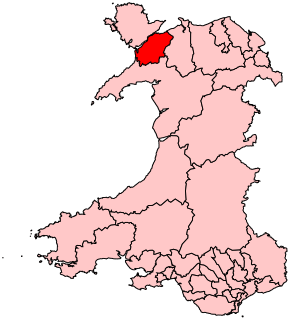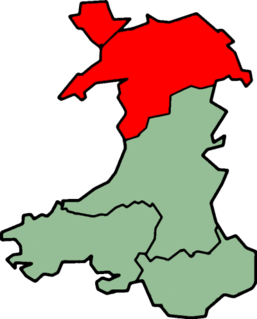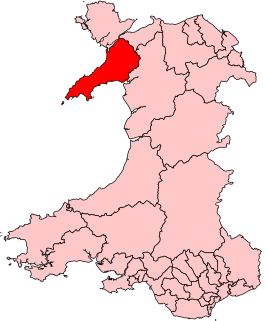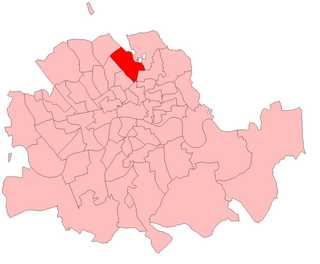This article includes a list of references, related reading or external links, but its sources remain unclear because it lacks inline citations .(May 2016) (Learn how and when to remove this template message) |
The Arfon by-election, 1915 was a parliamentary by-election held on 6 July 1915 for the Arfon division of Caernarvonshire in North Wales, a constituency of the British House of Commons.
By-elections, also spelled bye-elections, are used to fill elected offices that have become vacant between general elections.

Arfon is a constituency of the House of Commons of the Parliament of the United Kingdom. Although the constituency is relatively large by geographical area, it is a predominantly urban rather than rural seat, with the majority of the population living in the two towns on which the constituency is based, Bangor and Caernarfon. "Arfon" is a historical name for the area, meaning "facing Anglesey"; it is also the name of the former district council. This seat was created by the Welsh Boundary Commission in time for the 2010 general election, and replaced the old seat of Caernarfon. Bangor was in the old seat of Conwy. The same boundaries were used for the Arfon Welsh Assembly constituency in the 2007 Welsh Assembly election.

North Wales is a region of Wales. Retail, transport and educational infrastructure are centred on Wrexham, Rhyl, Colwyn Bay, Llandudno and Bangor. It is bordered to the rest of Wales with the counties of Ceredigion and Powys, and to the east by the English counties of Shropshire, Merseyside, and Cheshire.
The by-election was caused by death at the age of 55 of the Liberal Member of Parliament (MP) William Jones, a Junior Lord of the Treasury in H. H. Asquith's Liberal government, who had held the seat since the 1895 general election.

The Liberal Party was one of the two major parties in the United Kingdom with the opposing Conservative Party in the 19th and early 20th centuries. The party arose from an alliance of Whigs and free trade Peelites and Radicals favourable to the ideals of the American and French Revolutions in the 1850s. By the end of the 19th century, it had formed four governments under William Gladstone. Despite being divided over the issue of Irish Home Rule, the party returned to government in 1905 and then won a landslide victory in the following year's general election.

Herbert Henry Asquith, 1st Earl of Oxford and Asquith,, generally known as H. H. Asquith, was a British statesman and Liberal Party politician who served as Prime Minister of the United Kingdom from 1908 to 1916. He was the last prime minister to lead a majority Liberal government, and he played a central role in the design and passage of major liberal legislation and a reduction of the power of the House of Lords. In August 1914, Asquith took Great Britain and the British Empire into the First World War. In 1915, his government was vigorously attacked for a shortage of munitions and the failure of the Gallipoli Campaign. He formed a coalition government with other parties, but failed to satisfy critics. As a result, he was forced to resign in December 1916, and he never regained power.
The only candidate nominated to contest the by-election was the Liberal Caradoc Rees, who was therefore elected unopposed. Rees held the seat until the constituency was abolished at the general election in December 1918.
| Party | Candidate | Votes | % | ± | |
|---|---|---|---|---|---|
| Liberal | Griffith Caradoc Rees | Unopposed | |||
| Registered electors | |||||
| Liberal hold | |||||




